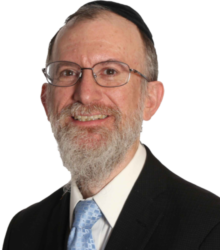Elon Musk, CEO of SpaceX and Tesla Motors, was quoted yesterday comparing artificial intelligence (AI) to “summoning the demon.” “I think we should be very careful about artificial intelligence. If I would guess at what our biggest existential threat is, it’s probably that… With artificial intelligence we are summoning the demon. You know all those stories where there’s the guy with the pentagram and the holy water and… he’s sure he can control the demon? Didn’t work out.” This is not a new sentiment for Musk, who called AI “more dangerous than nukes” earlier this summer.
Could AI truly be an “existential threat” – could computers, intended to help us, instead make us extinct? In theory, yes. Musk referred to HAL 9000, the sentient computer that murdered the crew in 2001: A Space Odyssey, as “a puppy dog” compared to what AI could produce. Colossus: The Forbin Project, the 1970 movie about two supercomputers that took over the world (and nuked a city when not obeyed), enslaving mankind for the “good” of mankind, seems more in line with his concerns.
If Musk has erred, it’s not because he has overestimated the power of consciousness. On the contrary, he sells it short, as the field of computer science has since its inception. If AI isn’t as scary as he imagines, it’s not because of what a sentient computer could do, but because it can only happen with a sentient computer.
Professor Alan Turing of Manchester University is often referred to as the “father of the modern computer” without much exaggeration. He and his peers changed our world – but they believed that the field of computer science would progress in a very different way. Whether or not anyone envisioned a global information network, enabling you to read this article on a handheld wireless device, they certainly believed that by the end of the last century, computers themselves would “awaken,” and add information on their own initiative. While the relevant field is usually called artificial intelligence, artificial consciousness is arguably more accurate; the intent was to produce a computer able to demonstrate creativity and innovation.
Turing needed an impartial way to determine if a computer was actually thinking. He proposed, in a 1950 paper, that if a teletype operator were unable to determine after five minutes that the party at the other end was a computer rather than another human being, then the computer would have passed the test. Turing proposed development of a program that would simulate the mind of a child, which would then be “subjected to an appropriate course of education” in order to produce an “adult” brain.
With all the phenomenal developments in the field of computer science, we are but marginally closer — if, indeed, we are closer at all — to developing a “child brain” than we were then. “Eugene Goostman,” recently declared to have passed the Turing Test during a competition at the University of Reading, was simply a chatbot programmed with evasive answers. It presented itself as a 13-year-old Ukrainian boy (who spoke English as a third language) not because it possessed the faculties of a young teenager, but to cover for its many errors and fool the assessors. Deceptive programming isn’t the intelligence Turing had in mind.
But “Goostman” was also in no way unique. Since 1990, inventor Hugh Loebner has underwritten an annual Turing contest at the Cambridge Center for Behavioral Studies in Massachusetts. And every year, all of the contestants are programs intended to fool the judges, and nothing more; the creativity or passion comes not from the silicon, but only from the programmers behind them.
As it turns out, Turing was preceded by over a millenium in determining his standard of human consciousness. The Rabbis of the Talmud stated the following, in Sanhedrin 65b:
Rava made a man. He sent him before Rebbe Zeira. [R. Zeira] spoke to it, but it did not answer. R. Zeira said, “are you from the scholars? Return to your dust!”
What the teacher Rava created was a Golem, an artificial humanoid that certain righteous individuals were purportedly able to create via spiritual powers. Much like a robot, it could obey commands and perform tasks – but it could not engage in conversation. The Maharsha explains why Rava’s Golem was unable to properly answer R. Zeira:
Because [Rava] could not create the power of the soul, which is speech. Because [the Golem] did not have a neshamah [soul], which is the spirit that ascends above, [but] only the life spirit which is also in animals, which descends below, [R. Zeira] said to it, “return to your dust.”
What this Talmudic passage and commentary tell us, then, is that creating an artificial consciousness isn’t nearly as simple as Turing imagined it to be. The Maharsha essentially tells us that intelligent speech is a manifestation of the soul invested in human beings — not something that programmers can simply drum up with several pages of well-written code. When Turing wrote that “presumably the child brain is something like a notebook … rather little mechanism, and lots of blank sheets” — he was making an assumption that, today, seems positively foolish.
Yet without any true progress towards development of artificial thought, many in the research community remain undeterred even today. Ray Kurzweil, now Director of Engineering at Google – and one of the great innovators and thinkers in computer science – predicts we’ll achieve this goal in 15 years, simply because technology progresses exponentially. An article in Princeton Alumni Weekly recently stated, regarding a prominent professor of psychology, that “if the brain is just a data-processing machine, then [Professor Michael] Graziano sees no reason we cannot create computers that are just as conscious as we are.”
That “if,” of course, is simply a restatement of Turing’s invalid assumption. Today’s supercomputers already process information more rapidly than we do, have larger memory banks, and of course have essentially perfect recall. Computers can see well enough to drive vehicles and hear and transcribe speech. But they cannot find meaning in what they see, nor respond as humans do to what they hear.
On the contrary, the failure to produce a semblance of a thinking computer should be causing a lot of second thoughts about the nature of human consciousness itself. We have proven that the brain is not simply a data-processing machine. When our most dedicated thinkers are unable to produce human thought, or even make substantive progress after decades of effort, are we perhaps not fools to imagine it developed by accident?

 As we discussed last year, the fruit symbolizes the Torah inside a person, while the fragrance represents the Mitzvos, the deeds a person does which affect those around him or her. The four species represent those who have both Torah and good deeds, those who have one but not the other, and even those who have neither.
As we discussed last year, the fruit symbolizes the Torah inside a person, while the fragrance represents the Mitzvos, the deeds a person does which affect those around him or her. The four species represent those who have both Torah and good deeds, those who have one but not the other, and even those who have neither. When we restart our computer, all of the old programs that were sitting there, using memory and slowing down the machine, are cleared away. This is the time of year when we’re granted a special opportunity to reboot our lives, to start over without the baggage of bad habits. It’s a time to examine which of our “running programs” are positive, and which are simply slowing us down.
When we restart our computer, all of the old programs that were sitting there, using memory and slowing down the machine, are cleared away. This is the time of year when we’re granted a special opportunity to reboot our lives, to start over without the baggage of bad habits. It’s a time to examine which of our “running programs” are positive, and which are simply slowing us down.